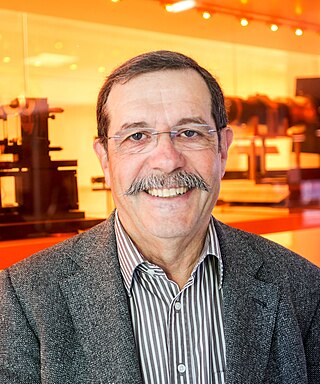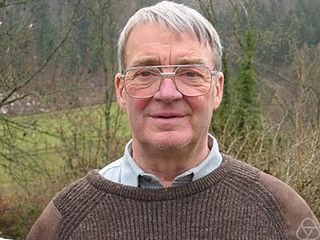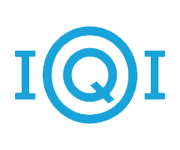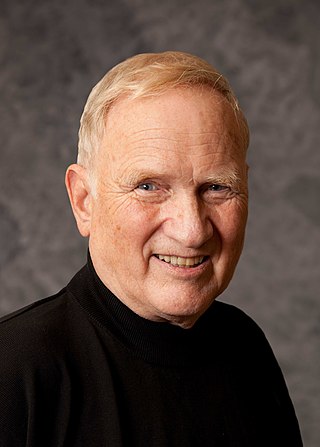The Copenhagen interpretation is a collection of views about the meaning of quantum mechanics, stemming from the work of Niels Bohr, Werner Heisenberg, Max Born, and others. The term "Copenhagen interpretation" was apparently coined by Heisenberg during the 1950s to refer to ideas developed in the 1925–1927 period, glossing over his disagreements with Bohr. Consequently, there is no definitive historical statement of what the interpretation entails. Features common across versions of the Copenhagen interpretation include the idea that quantum mechanics is intrinsically indeterministic, with probabilities calculated using the Born rule, and the principle of complementarity, which states that objects have certain pairs of complementary properties that cannot all be observed or measured simultaneously. Moreover, the act of "observing" or "measuring" an object is irreversible, and no truth can be attributed to an object, except according to the results of its measurement. Copenhagen-type interpretations hold that quantum descriptions are objective, in that they are independent of physicists' personal beliefs and other arbitrary mental factors.

Quantum mechanics is a fundamental theory in physics that provides a description of the physical properties of nature at the scale of atoms and subatomic particles. It is the foundation of all quantum physics including quantum chemistry, quantum field theory, quantum technology, and quantum information science.

Quantum entanglement is the phenomenon that occurs when a group of particles are generated, interact, or share spatial proximity in a way such that the quantum state of each particle of the group cannot be described independently of the state of the others, including when the particles are separated by a large distance. The topic of quantum entanglement is at the heart of the disparity between classical and quantum physics: entanglement is a primary feature of quantum mechanics not present in classical mechanics.
Bell's theorem is a term encompassing a number of closely related results in physics, all of which determine that quantum mechanics is incompatible with local hidden-variable theories, given some basic assumptions about the nature of measurement. "Local" here refers to the principle of locality, the idea that a particle can only be influenced by its immediate surroundings, and that interactions mediated by physical fields cannot propagate faster than the speed of light. "Hidden variables" are putative properties of quantum particles that are not included in quantum theory but nevertheless affect the outcome of experiments. In the words of physicist John Stewart Bell, for whom this family of results is named, "If [a hidden-variable theory] is local it will not agree with quantum mechanics, and if it agrees with quantum mechanics it will not be local."

John Stewart Bell FRS was a physicist from Northern Ireland and the originator of Bell's theorem, an important theorem in quantum physics regarding hidden-variable theories.
Quantum indeterminacy is the apparent necessary incompleteness in the description of a physical system, that has become one of the characteristics of the standard description of quantum physics. Prior to quantum physics, it was thought that
A Bell test, also known as Bell inequality test or Bell experiment, is a real-world physics experiment designed to test the theory of quantum mechanics in relation to Albert Einstein's concept of local realism. Named for John Stewart Bell, the experiments test whether or not the real world satisfies local realism, which requires the presence of some additional local variables to explain the behavior of particles like photons and electrons. To date, all Bell tests have found that the hypothesis of local hidden variables is inconsistent with the way that physical systems behave.

Anton Zeilinger is an Austrian quantum physicist and Nobel laureate in physics of 2022. Zeilinger is professor of physics emeritus at the University of Vienna and senior scientist at the Institute for Quantum Optics and Quantum Information of the Austrian Academy of Sciences. Most of his research concerns the fundamental aspects and applications of quantum entanglement.

Alain Aspect is a French physicist noted for his experimental work on quantum entanglement.

Julius Erich Wess was an Austrian theoretical physicist noted as the co-inventor of the Wess–Zumino model and Wess–Zumino–Witten model in the field of supersymmetry and conformal field theory. He was also a recipient of the Max Planck medal, the Wigner medal, the Gottfried Wilhelm Leibniz Prize, the Heineman Prize, and of several honorary doctorates.
Superdeterminism describes the set of local hidden-variable theories consistent with the results of experiments derived from Bell's theorem which include a local correlation between the measurement settings and the state being measured. Superdeterministic theories are not interpretations of quantum mechanics, but deeper theories which reproduce the predictions of quantum mechanics on average, for which a few toy models have been proposed. In such theories, "the probabilities of quantum theory then become no more mysterious than those used in classical statistical mechanics." Postulating that systems being measured are correlated with the settings of the measurements apparatus, is a violation of what Bell described as a "vital assumption" of his theorem. A hidden-variables theory which is superdeterministic can thus fulfill Bell's notion of local causality and still violate the inequalities derived from Bell's theorem. Unlike Bell test § Loopholes, superdeterministic theories cannot be excluded by Bell-type experiments as ultimately the past light cones of all measurement settings and measured states overlap at the Big Bang implying a necessarily shared causal past and thus the possibility of local causal dependence.

The Institute for Quantum Optics and Quantum Information (IQOQI) (German: Institut für Quantenoptik und Quanteninformation) is a member institute of the Austrian Academy of Sciences and was founded in November 2003, to create an Austrian research center for the newly developing fields of theoretical and experimental quantum optics and quantum information.

John Francis Clauser is an American theoretical and experimental physicist known for contributions to the foundations of quantum mechanics, in particular the Clauser–Horne–Shimony–Holt inequality. Clauser was awarded the 2022 Nobel Prize in Physics, jointly with Alain Aspect and Anton Zeilinger "for experiments with entangled photons, establishing the violation of Bell inequalities and pioneering quantum information science".

In physics and the philosophy of physics, quantum Bayesianism is a collection of related approaches to the interpretation of quantum mechanics, the most prominent of which is QBism. QBism is an interpretation that takes an agent's actions and experiences as the central concerns of the theory. QBism deals with common questions in the interpretation of quantum theory about the nature of wavefunction superposition, quantum measurement, and entanglement. According to QBism, many, but not all, aspects of the quantum formalism are subjective in nature. For example, in this interpretation, a quantum state is not an element of reality—instead it represents the degrees of belief an agent has about the possible outcomes of measurements. For this reason, some philosophers of science have deemed QBism a form of anti-realism. The originators of the interpretation disagree with this characterization, proposing instead that the theory more properly aligns with a kind of realism they call "participatory realism", wherein reality consists of more than can be captured by any putative third-person account of it.

Epistemological Letters was a hand-typed, mimeographed "underground" newsletter about quantum physics that was distributed to a private mailing list, described by the physicist and Nobel laureate John Clauser as a "quantum subculture", between 1973 and 1984.
Daniel M. Greenberger is an American quantum physicist. He has been professor of physics at the City College of New York since 1964. He is also a fellow of the American Physical Society and—alongside Anton Zeilinger—founded the APS Topical Group on Quantum Information.
The John Stewart Bell Prize for Research on Fundamental Issues in Quantum Mechanics and their Applications was established in 2009, funded and managed by the University of Toronto, Centre for Quantum Information & Quantum Control (CQIQC). Named after John Stewart Bell, it is awarded every odd-numbered year, for significant contributions relating to the foundations of quantum mechanics and to the applications of these principles – this covers, but is not limited to, quantum information theory, quantum computation, quantum foundations, quantum cryptography and quantum control. The selection committee has included Gilles Brassard, Peter Zoller, Alain Aspect, John Preskill, and Juan Ignacio Cirac Sasturain, in addition to previous winners Sandu Popescu, Michel Devoret and Nicolas Gisin.
Quantum Theory: Concepts and Methods is a 1993 quantum physics textbook by Israeli physicist Asher Peres. Well-regarded among the physics community, it is known for unconventional choices of topics to include.
Michael Allan Horne was an American quantum physicist, famous for his work on the foundations of quantum mechanics.
Karl George Emeléus was an English experimental physicist who spent half a century on the staff at Queen's University Belfast. His early research in detection of nuclear radiation led on to a lifetime of research into the conduction of electricity through gases.










